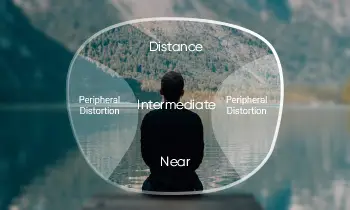When our eyes see one thing becomes two, some people who experience this condition think it is caused by overuse of the eyes and think it will be fine after taking a break. If it is not relieved after rest and accompanied by headaches and other symptoms, indicating that the body may develop seriously, it is necessary to pay attention.
Seeing things in pairs has a specialized medical explanation - diplopia (double vision).
What is diplopia
The symptoms of double vision are ophthalmic disorders and can be divided into monocular and binocular double vision.
Monocular double vision
If you block one eye with your hand and then look at something, if there is double vision, then there is double vision in the eye that is not blocked, and monocular double vision. Monocular double vision occurs mainly due to eye diseases such as high astigmatism, cataract, lens dislocation, etc. A small number of major diseases can also cause monocular double vision.
Binocular double vision
If you block one eye with your hand and then look at something, there is no double vision in one eye, but there is double vision in both eyes when you look at something together, then it is binocular double vision. The main cause of double vision is the inability of the same object to fall on the corresponding point on the retina of both eyes due to central lesions, systemic diseases that cause nerve, neuromuscular junction or extraocular muscle movement disorders.
What are the symptoms of double vision
Typical symptoms
Double vision: A typical symptom of double vision is that the affected person will see one object as two.

Accompanying symptoms
1. Dizziness
2. Headache: Visual double vision due to lacrimal gland adenoid cystic carcinoma, posterior sclerosis, and other diseases is often accompanied by headache.
3. Eyelid edema and congestion: commonly caused by posterior sclerosis and ocular trauma resulting in double vision.
4. Protrusion of the eyeball: Hyperopia caused by thyroid-related eye disease is often accompanied by protrusion of the eyeball.
Therefore, double vision may only be caused by visual fatigue. However, suppose we have double vision along with the accompanying symptoms, which cannot be relieved after rest. In that case, we must promptly go to the relevant institutions for consultation and treatment to avoid the aggravation of the symptoms.
How to treat and prevent double vision
Treatment is available for double vision. The first step is to find the cause of the problem and treat the cause—for example, brain injury, systemic diseases, and extraocular muscle problems. If the cause cannot be found, symptomatic treatment is available.
Some double vision is difficult to prevent, but those caused by systemic diseases can be prevented by developing good eye habits, such as reducing closed eye use and eye time and avoiding eye use in too dark environments.
Therefore, as long as early detection and early intervention and treatment, double vision is not a terrible thing.



































